Brass Door Furniture
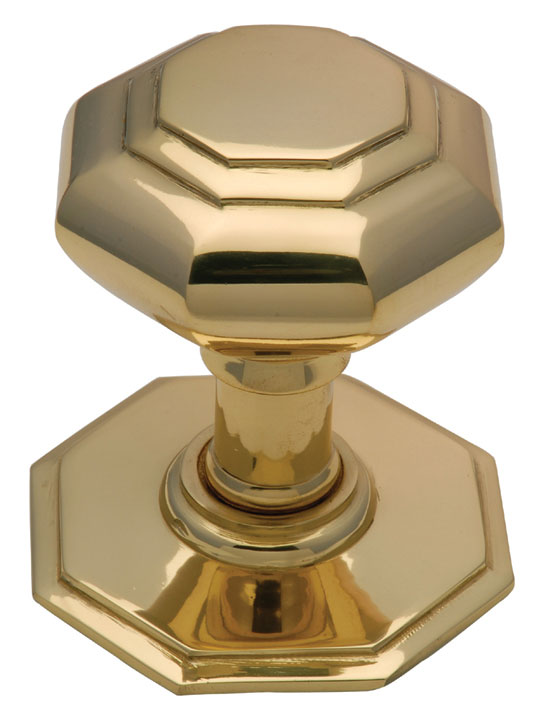
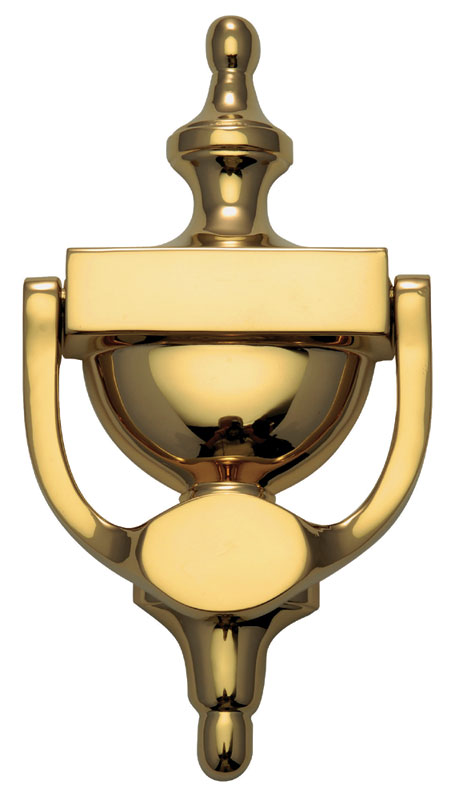
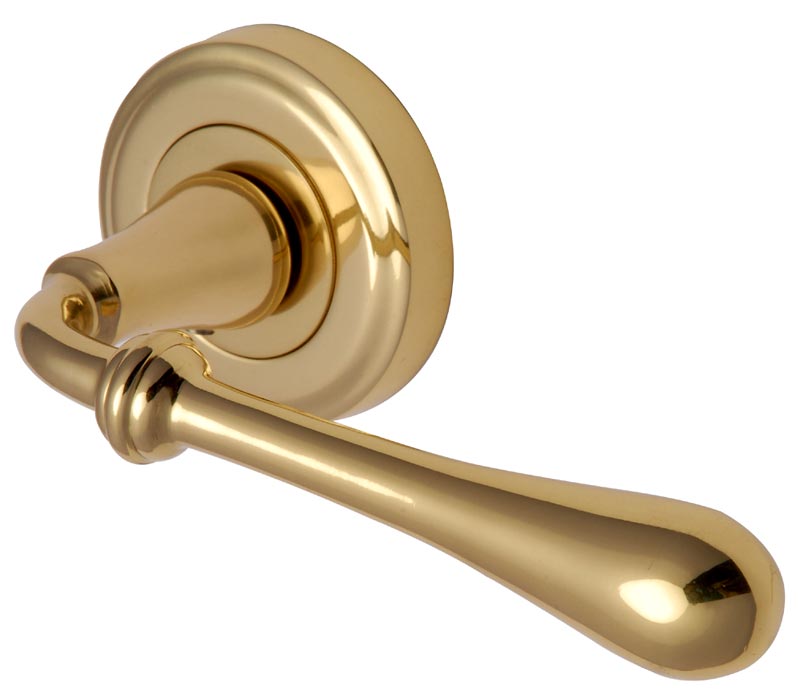
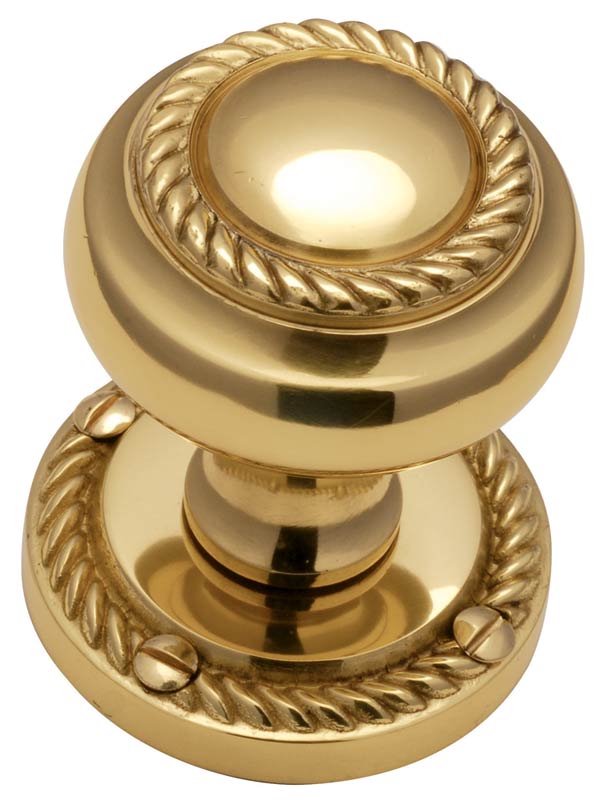
Click here to view our range of Brass Door Furniture
Brass first became available as early as 1585 in the form of brass lattens, which were a solid block of brass that could be shaped into various household items such as bowls and basins etc. Although brass was available as early as this time, actual brass door furniture was not produced until 1595 and the brass was made from an alloy of copper and calamine. This brass was not cast easily and was very red in colour, similar to copper. It was of poor quality and had a bubbled and pitted appearance.
From 1690-1710, lead was added to the copper and calamine alloy resulting in a much softer brass that was easier to shape, as all productions were still done by hand. 1725 saw the invention of the spring rolling machine that allowed the brass to be rolled into sheets and stamped to a particular pattern, but it wasn't until 1770 when James Emerson patented an alloy of copper and zinc that British brass became known as what it is today. From 1860 more complicated casting could be produced allowing more intricate and ornate pieces.
Although today we regard Georgian brass as rope effect, Regency as beaded and Victorian as plain, in fact only the Regency style is correct. True Georgian furniture was symbolised by plain knobs on a round rose, and it was the Victorian era that saw the introduction of swirls and decorative styles. Today's Regency style is a more accurate representation of furniture designs of that time. Two types of beading were evident, a consistent small bead and a pea bead which was a small bead followed by an elongated bead. (Looked more like a bean than a pea!!)
Brass door furniture was considered to be an extravagance during and after the Second World War and is still seen as being luxurious today!
Q. Why does my brass door furniture tarnish over a period of time when exposed to the environment?
A. This is due to many factors. These include salt spray if you live near the sea or a main road, humidity and pollution. These conditions attack the lacquer on the furniture and break it down, therefore there is no protection for the brass and after a while it will become discoloured. Rings and keys can also scratch the clear lacquer coating and this should be avoided as much as possible, once the protective coating is damaged tarnishing and discolouration will start to occur.
Q. Should I use metal polishes to clean my brass door furniture?
A. Brassware items that have been coated in lacquer must never be cleaned with metal polishes or aerosol spray polishes. The lacquer coating will be damaged and this will then cause early discolouration.
Q. Can the protective coating be damaged by other cleaning agents?
A. Yes. As well as metal polishes it is also necessary to avoid any abrasive cleaning liquid, chemicals or cleaning solvents as these will all damage the lacquer coating. Wire brushes or scouring pads should also be avoided.
Q. How can I clean, maintain and prevent my brassware from tarnishing?
A. If your brassware is fitted on interior doors it is less likely to tarnish, as it is not exposed to the harsh exterior environment. Regular dusting with a camel hair brush or soft cloth should be sufficient together with an occasional wash with warm mild soapy water, never use hot water. If, however, your brass furniture is fitted on exterior doors the process is different. You should still dust your brassware, but it is advisable to apply a coating of wax polish once a week, this should keep your brassware in good condition. It is also beneficial to lubricate the mechanism with a drop of light oil about once a year. Unfortunately, after prolonged exposure to an exterior environment the lacquer will probably break down. If this happens the lacquer can be removed by using paint stripper solution, acetone or even nail varnish remover, only then will your brassware be suitable to clean with a metal polish. Mechanical polishing with metal polish will remove any tarnishing once all trace of the lacquer has been removed but take care not to be too aggressive especially with fine or delicate brass. An alternative way to remove tarnishing and corrosion is to rub any affected areas with a slice of lemon after the lacquer has been removed. The lemon can be dipped in salt to assist the process by providing some gentle abrasion. Be sure to wash and dry the item using warm soapy water afterwards or the acid in the lemon may continue to attack the brass after the corrosion has been removed.
Q. Once I have removed the lacquer, do I have to reapply a new coat of lacquer?
A. Not necessarily, once you have removed the lacquer you can maintain the brass quite easily with simple regular maintenance. First wash and dry your item with warm soapy water to ensure the brass is clean. Next you can polish with a cloth that has previously been soaked in a metal polish such as Brasso™ and allowed to dry for 24 hours. The cloth can be used more than once to clean your brass because the polish will have soaked into the material of the cloth by leaving it for 24 hours - this will save on polish and give a better finish! After polishing up with a dry cloth, wipe your brass with a little olive oil. To maintain the finish on un-lacquered brass it is simply necessary to wipe once a week with liquid ammonia and then a little olive oil to create a hard wearing finish on the brass that will require very little further polishing! Alternatively you could reapply a new layer of transparent lacquer and clean as mentioned in the previous question above. Whilst re-applying lacquer may be appropriate for internal brass we recommend leaving the lacquer off external brass and maintaining it as described here. In the case of genuine antique or very delicate brass please refer to the next question.
Q. I have genuine unlacquered old antique brass pieces and wish to maintain them without damaging the surface, what should I use?
A. To clean genuine old antique brass pieces which have never been lacquered, firstly wash them with warm soapy water and then dry. Make a paste using whiting and boiled linseed oil then use this to clean your pieces. This is a soft paste and so should not damage the antique look of your brass. As with all cleaning processes, check your method on a small hidden area first to ensure you are achieving the desired results. A whiting and boiled linseed oil paste could also be used as an alternative to metal polish in the previous question, especially on fine delicate pieces.
Q. Are there better qualities of lacquer which will stop my brass from tarnishing?
A. High quality brassware, which includes most of the range sold at our online store, are protected by a process known as electrophoretic lacquering. During this process the article is suspended to form the cathode in the electrophoretic process, the anode is plain stainless steel. A voltage is applied and positively charged microscopic particles migrate towards the workpiece and plate onto it. Being non-conductive, these particles progressively insulate the area already covered causing the current to flow in uncovered areas. An even coating of a 5 to 10 micron layer is achieved and stoving at 125 to 150 ºC completes the process. This process has significant benefits over conventional lacquer as follows:
1) High gloss and good solvent resistance
2) Greater pencil hardness
3) Can withstand greater hours in salt spray test
4) It adheres 100% on the coated surface
5) Improved solvent resistance
6) Humidity cycling does not affect adhesion or appearance for a prolonged period
7) Helps in avoiding drip and tear marks
8) Environment friendly
9) Improved chemical property
10) Ultra violet radiation resistant
Brassware made with this process will certainly last longer before it discolours when compared to a conventionally lacquered product. Please email us for verification if you wish to be sure that you have selected a product with this type of lacquer.
Q. Is there any such thing as non-tarnishable brass?
A. There is indeed a product that has a guaranteed promise that your brass will not tarnish! This product is called Everbrite™ and is available on our online store. It is more expensive than other brassware but your door furniture will look the best in the street and your neighbours will be wondering how your brassware always stays so bright and clean. Everbrite™ uses a process called to achieve its durable finish, this involves depositing molecules of durable metals onto the brass surface. This microscopic layer protects the brass from becoming discoloured and tarnished when exposed to pollution, sunlight and coastal areas. Everbrite™ are so confident they offer a 10 year guarantee on the finish of this brassware, even when exposed to harsh environments.
Q. Can I mix Everbrite™ brass and lacquered brass around my house?
A. Everbrite™ brass is slightly richer in colour to lacquered brass and, because there is no lacquer on the surface of this finish, it has a brighter polished shine. Whilst the two products are very similar and certainly don't look out of place next to each other, they would not be a perfect match on the same side of a door. It should also be considered that the finish on lacquered brass may deteriorate with time, whereas the Everbite™ would not, and as a result the slight difference in appearance could become exaggerated. If however the products were used on different doors in the same house it would be difficult to spot the difference. Many people therefore use Everbrite™ on the external side of their front and back doors (were corrosion is most likely to occur) and standard lacquered brass internally. It could also be considered for bathroom doors and is ideal for marine applications where we recommend that the handle's mechanism is well greased before fitting. Some people like the Everbite™ finish so much they have fitted it throughout their house! The images below show Everbite™ products on the left and polished brass on the right.
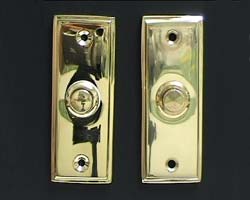
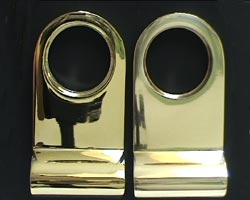
DISCLAIMER Door Furniture Direct makes every effort to ensure that the information contained in our FAQs is correct and accurate. We can however accept no responsibility for any errors or omissions or their subsequent effects. Indeed if you find any please let us know, we appreciate any advice or comments to improve these pages.
